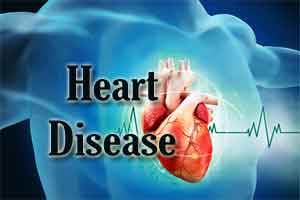- Home
- Editorial
- News
- Practice Guidelines
- Anesthesiology Guidelines
- Cancer Guidelines
- Cardiac Sciences Guidelines
- Critical Care Guidelines
- Dentistry Guidelines
- Dermatology Guidelines
- Diabetes and Endo Guidelines
- Diagnostics Guidelines
- ENT Guidelines
- Featured Practice Guidelines
- Gastroenterology Guidelines
- Geriatrics Guidelines
- Medicine Guidelines
- Nephrology Guidelines
- Neurosciences Guidelines
- Obs and Gynae Guidelines
- Ophthalmology Guidelines
- Orthopaedics Guidelines
- Paediatrics Guidelines
- Psychiatry Guidelines
- Pulmonology Guidelines
- Radiology Guidelines
- Surgery Guidelines
- Urology Guidelines
Carcinoid Heart Disease Guidelines

The following are key points to remember from this Expert Statement about the diagnosis and management of carcinoid heart disease in patients with neuroendocrine tumors:
- Carcinoid heart disease is a frequent occurrence in patients with carcinoid syndrome and is accountable for substantial morbidity and mortality.
- The pathophysiology of carcinoid heart disease is not well understood; however, chronic exposure to excessive circulating serotonin is considered one of the most important contributing factors.
- N-terminal pro–B-type natriuretic peptide (NT-proBNP) appears to be the best biomarker to date for screening carcinoid syndrome patients for evidence of clinically significant carcinoid heart disease (Evidence Level 2-3, Grade B).
- Measurement of either 24-hour urine 5-hydroxyindoleacetic acid (5-HIAA) or plasma 5-HIAA is mandatory for diagnosis and follow-up of carcinoid syndrome. Further more, a 24-hour urinary 5-HIAA level >300 μmol/24 hour is a useful marker for identifying those at risk of developing carcinoid heart disease (Evidence Level 2, Grade B).
- Transthoracic echocardiography remains the gold standard for diagnosis and follow-up of carcinoid heart disease. It should be performed in all patients with carcinoid syndrome and high suspicion of carcinoid heart disease, such as clinical features or raised NT-proBNP and/or 5-HIAA levels. For established carcinoid heart disease, echocardiography should be performed if dictated by a change in clinical status; otherwise/thereafter every 3-6 months, depending on the severity of established carcinoid heart disease and clinical status (Evidence Level 2, Grade B).
- Cardiac magnetic resonance can be used to evaluate the pulmonary valve, identify cardiac metastases, and assess right ventricular size and function (Evidence Level 2, Grade B).
- Long-acting formulations of somatostatin analogs are the standard treatment used to alleviate symptoms related to the carcinoid syndrome, and prevent the development and/or progression of carcinoid heart disease (Evidence Level 2, Grade B).
- In cases of carcinoid syndrome that are refractory to somatostatin analogs, options include escalation of the somatostatin analog dose to above labeled doses, addition of IFN-alfa, or peptide receptor radionuclide therapy (PRRT). The oral serotonin synthesis inhibitor, telotristat, represents a promising agent to improve symptoms of the carcinoid syndrome; however, it is not yet approved, and is currently only available for compassionate use in the United States. Given the limited data, everolimus cannot currently be recommended for the treatment of carcinoid syndrome (Evidence Level 2-4, Grade B/C).
- The patient with carcinoid heart disease should be managed by a specialized multidisciplinary team, within a setting of a specialized neuroendocrine tumor (NET) center (Evidence Level 5, Grade D).
- An experienced medical (cardiologists and NET specialists with involvement of other specialists as necessary), surgical, and anesthetic team approach to the patient with carcinoid heart disease is critical to provide state-of-the-art management for these patients (Evidence Level 5, Grade D).
- The choice of valve prosthesis should be individually tailored on the basis of the patient’s bleeding risk, and possible future therapeutic interventions. Biological valve prostheses are the preferred option (Evidence Level 4, Grade D).
- To prevent a carcinoid crisis during surgery, the patient should be started on an IV octreotide infusion at a rate of 50-100 mcg/h at least 12 hours preoperatively; this should be continued throughout the procedure and until stable. Patients should be monitored for occurrence of bradycardia if high doses of octreotide are used (Evidence Level 4, Grade C).
- Patients with confirmed carcinoid heart disease should be referred to a NET center with cardiology and cardiac surgery departments having expertise in dealing with this complex pathology (Evidence Level 5, Grade D).
You can read the full Article by clicking on the link :
Next Story
NO DATA FOUND

Disclaimer: This site is primarily intended for healthcare professionals. Any content/information on this website does not replace the advice of medical and/or health professionals and should not be construed as medical/diagnostic advice/endorsement or prescription. Use of this site is subject to our terms of use, privacy policy, advertisement policy. © 2020 Minerva Medical Treatment Pvt Ltd